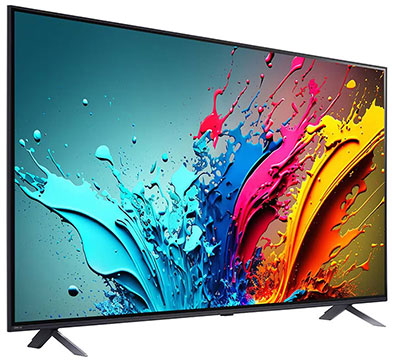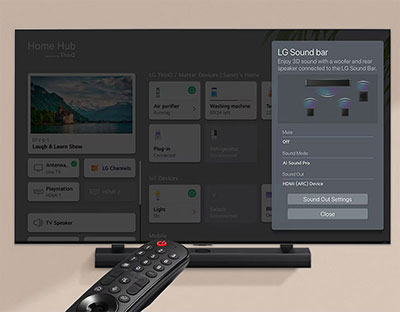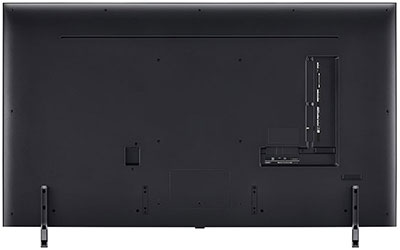
LG 4K Nanocell TV offers nice performance and good valueBy Jim Bray Television technology continues to advance, with many of today's screens offering picture quality and other features that could have only been dreamed about not too many years ago. I've followed, and participated in, this evolution ever since I discovered I might be a nerd – or at least since my first colour TV. Back then, a 20-inch screen was considered the best because, as CRT-based technology, that size offered the best compromise between pixels and the (empty) space between them. You could get up to 27 inches or so (and, eventually, giant CRT's of 40 inches or so also came along) but it was argued by many video snobs that the actual picture quality was best at 20 inches. That was analogue technology and though its resolution never really got beyond 480i, it was pretty darn good for the time, especially if you embraced the old Laserdisc technology and, then, DVD. Now, of course, it's a whole 'nuther ballgame, with digital high-definition TV having been the rule for the past couple of decades. And now it's "ultra high definition", which is known mostly as 4K (3840 x 2160 pixels). Today's TV's have not only grown in pixel count, of course, but in picture quality as well. Top of the line quality, as far as I've seen so far, is OLED technology, which offers fantastic colours and blacks in ultra-thin packages. The downside is that they're still expensive, appreciably more expensive than other, lesser types of panel. LG has been leading the OLED charge for quite a while now, after Sony pretty well abandoned the technology it had actually invented decades earlier. Now, several players are vying for your OLED dollars, which should help bring prices down. They're not there yet, though, so in this little ditty I'm going to talk about an LG 65-inch QNED flat panel, the AI QNED85 4K Smart TV. This $1199 (depending on where and when you buy it) is available in a variety of screen sizes from 55 to 86 inches, but LG Canada chose to send the 65-inch version, which is a reasonable compromise. QNED uses what LG calls a quantum dot colour filter and NanoCell technology to supposedly display a wider variety of colours than "lesser" LED TV's. I guess it's their way of competing with Samsung's excellent QLED system, which is what my reference TV is and which is extremely good, nearly as good as OLED. 
This "more mainstream" LG isn't quite up to that standard, but it's still a fine TV, if you can get your head around its damn remote control. I'll whine about that more later. Unpacking and setting up the TV is a two-person job, but it isn't particularly onerous. You just take it out of the box and screw on its legs (if you aren't mounting it to a wall or a stand) and then Bob's your uncle. The picture looks good right out of the box, but I'm not happy until I've wreaked my own personal havoc on it via my high-definition calibration disc, Joe Kane's Digital Video Essentials HD Basics disc. Alas, I only have a 1080p version, but I use it to set up every TV I get to either own or review. It gives you an abundance of test patterns to not only help tweak the TV but to see whether or not it even requires such. I noticed that the TV came out of the box looking really good, but with the picture much brighter than necessary, according to the "pluge test" on my DVE disc. So, I turned it down to where it should be (depending, of course, on your viewing room's lighting) and found it much more satisfying. Even more satisfying for me was the presence of "Filmmaker Mode", which supposedly sets the TV to display films the way the creators created it. LG says it "automatically preserves the director's original colors, settings and frame rates". It does seem to work, too, though I still tweaked it a tad from there (because I just can't stop playing with things!). Blacks are excellent, colours are also extremely good, you also get high dynamic range and Dolby Atmos capability (you'll want to add a bunch of extra speakers to really take advantage of that, though!). Speaking of sound, I was really impressed with this LG. In my real-life home theatre, where this was set up temporarily, I never even bother to use a TV's speakers. Instead, I output the TV's audio to my big Rotel/JBL/M&K audio system, which works far better than any TV or sound bar I've heard. But for this test, I naturally had to use the LG's speakers and I'm glad I did. Oh, if this TV were to remain at Chateau Bray I'd hook it into the audio system as well, but if you don't have such capabilities you may find this LG to be quite satisfying. 
Naturally, the bass isn't what you can get from a good subwoofer, nor is the power enough to rock the photos on the wall, but the overall fidelity is really quite good, and the soundstage is surprisingly wide. If I weren't such a snob, I'd probably be very happy with it. Alas, the LG isn't perfect. I hated the webOS interface, which is complicated and tries to offer so much stuff in the way of apps, connectivity and such that it takes this from being merely a TV to an honest to goodness media Hub. Heck, you can even apparently get it to interface with your LG appliances. You also get a selection of "live TV" channels, a feature that's becoming ever more popular as the formerly mainstream networks continue to bleed viewers; there's also a selection of such pay apps as Netflix, Disney+, YouTube, Prime Video, and Apple TV+. You have to have the TV online for that, and the setup for that is easy as pie. I don't trust TV makers to have my best interests, let alone my privacy, at heart, so I only put my TV's online when I want to check for a firmware update (rare). And since I have Roku, I don't want, need, or care about all the apps the LG offers. I don't know if Roku is any more trustworthy about your privacy as LG (or, I daresay, anyone else!) is, but at least the Roku has a much simpler interface that doesn't require you to wave the stupid, non-backlit, remote around aimed at the screen like it's a Wii controller. My wife got quite tired of my complaining about the remote! It's fussy and finicky and I kept hitting the wrong icons as I waved it around. I also kept hitting the wrong buttons on the remote when we were watching the LG in a darkened room. Operator error? Undoubtedly, but there'd have been no errors with a different, and backlit, remote. On the other hand, I'd probably get used to it in time; I just shouldn't have to. I found that you can avoid the webOS and all that other crap (other than the remote itself) by setting the LG to fire up on its last-used input rather than the Home screen. This upped my enjoyment of the LG immensely. I only used two of the LG's four HDMI input (for my Roku Ultra and my Oppo UHD player), and that gave me all I wanted or needed and, since we usually end our evenings of watching with a trip through YouTube on the Roku, the LG would come right back to the Roku's input the next day. This saved me from throwing the remote at the screen, and I'm grateful for that. LG probably is, too, since it's their TV… All this carping considered, I liked the LG QNED85 very much. If I were buying, I'd get a bigger one, but 65 inches is a pretty decent compromise for people with smaller rooms or who don't live and breathe this stuff. The picture quality is excellent, the sound is far better than I expected and, overall, the TV works very well (too well, when it comes to all that other stuff). A good mainstream TV. Copyright 2024 Jim Bray |